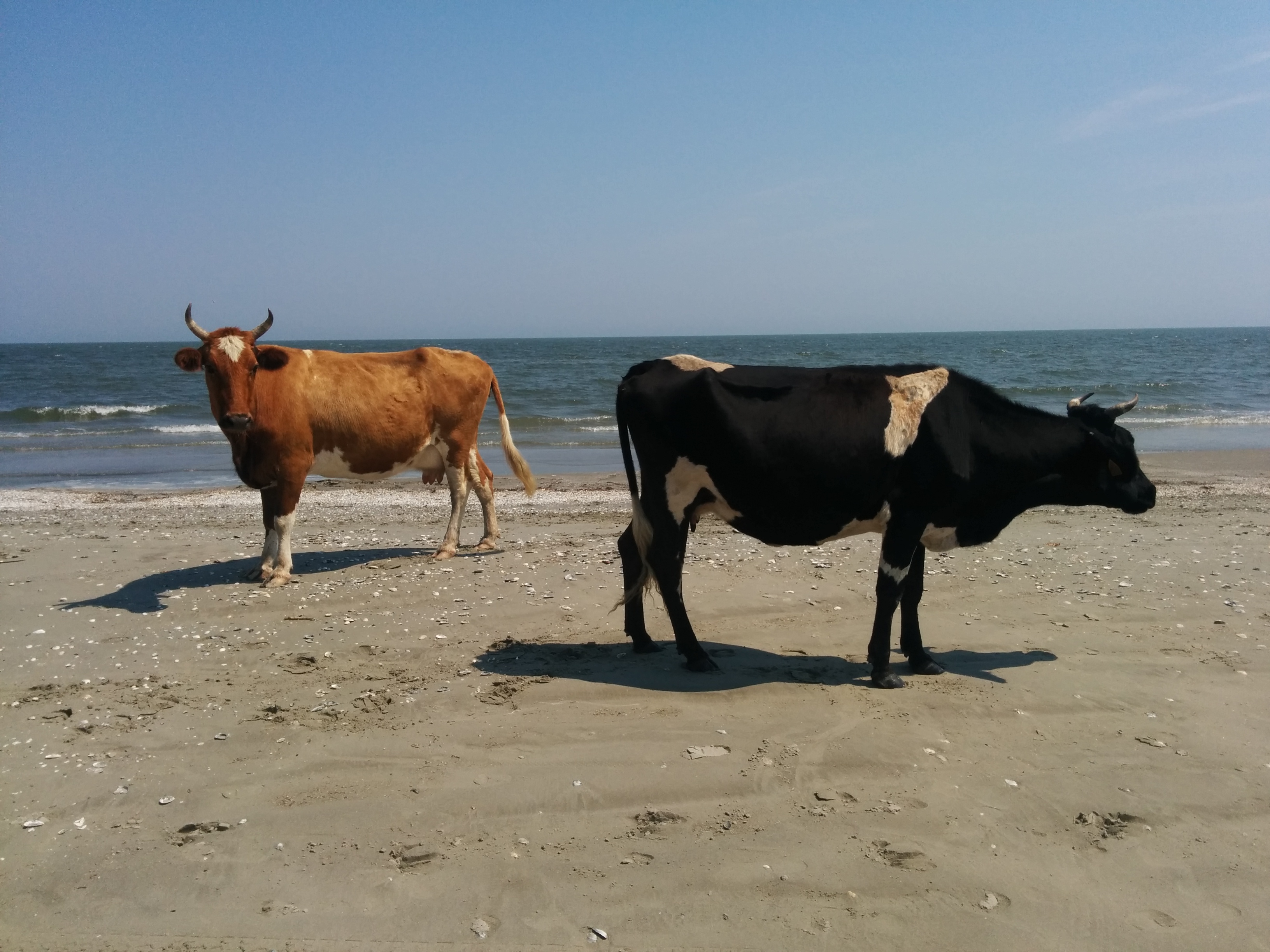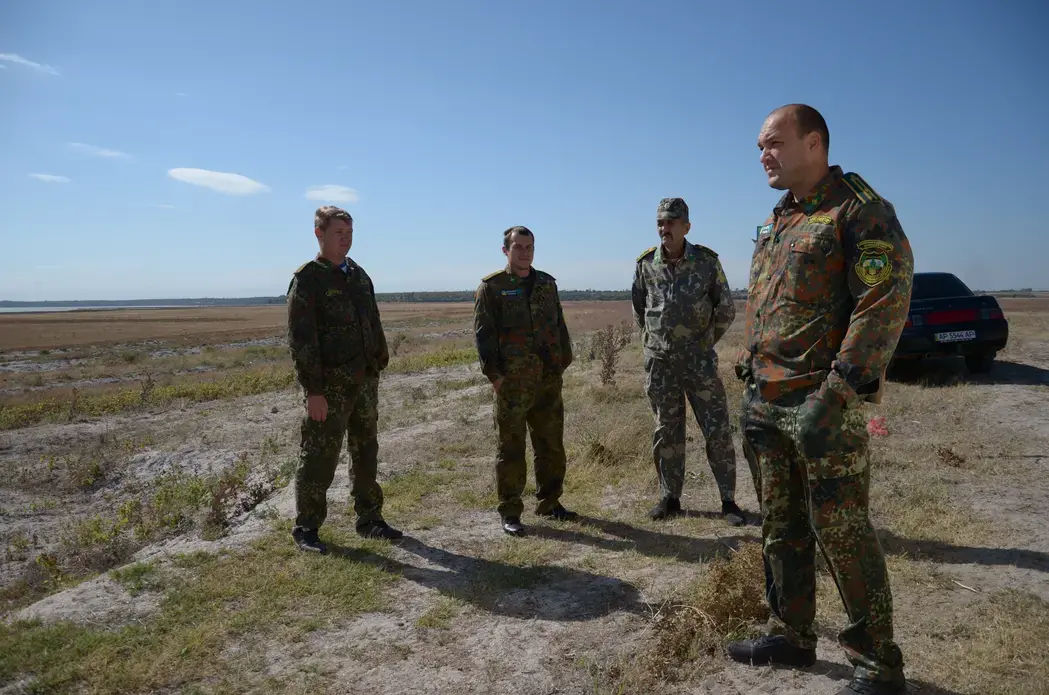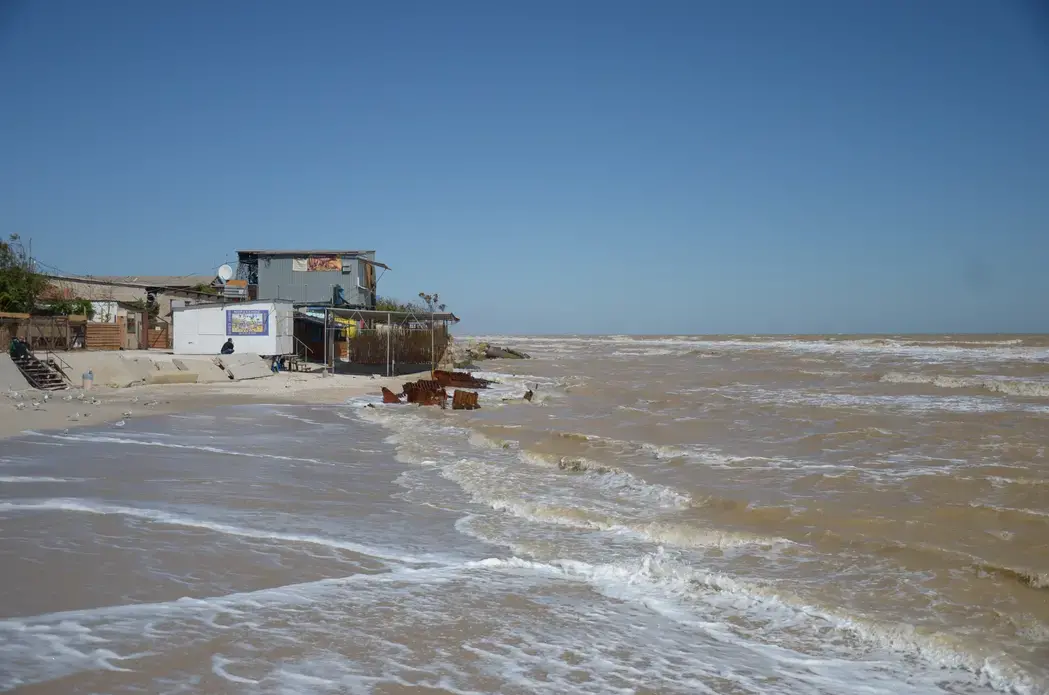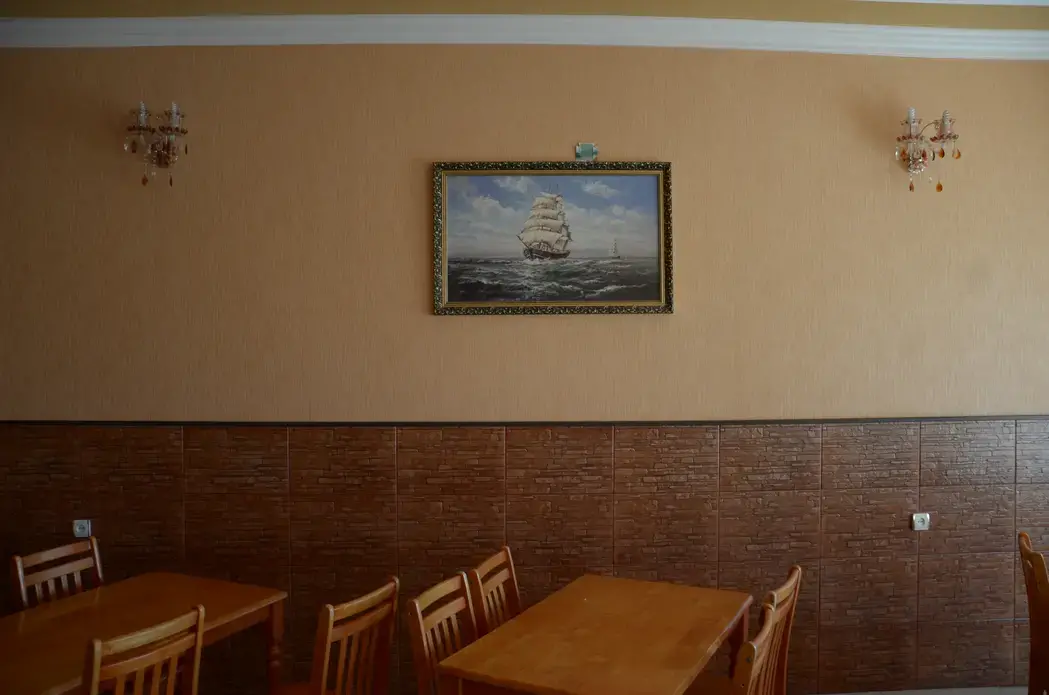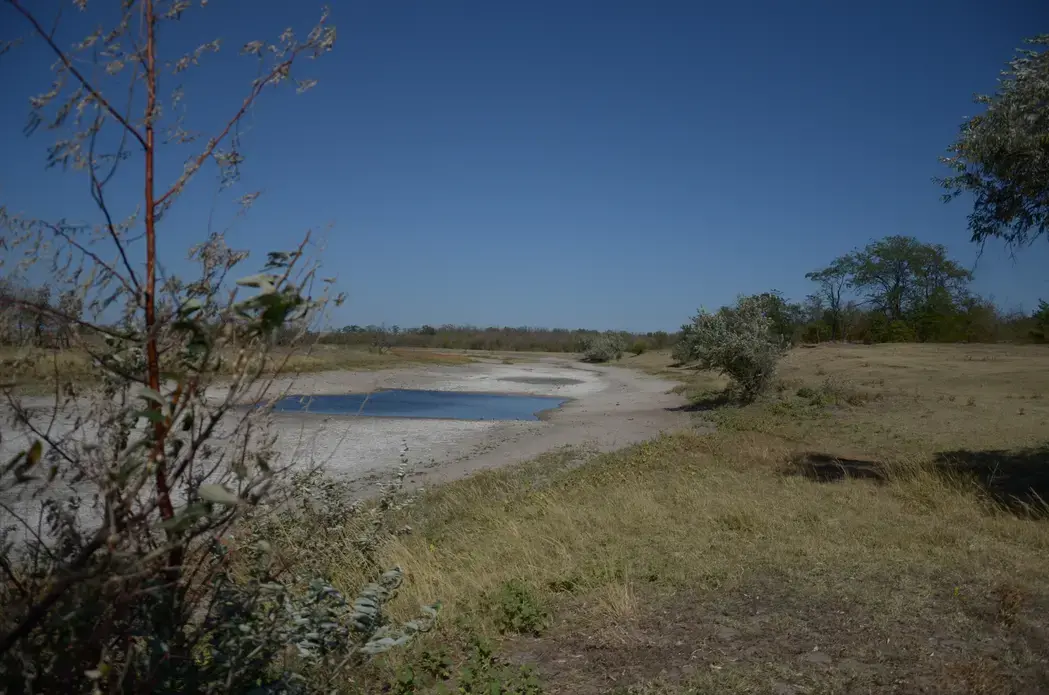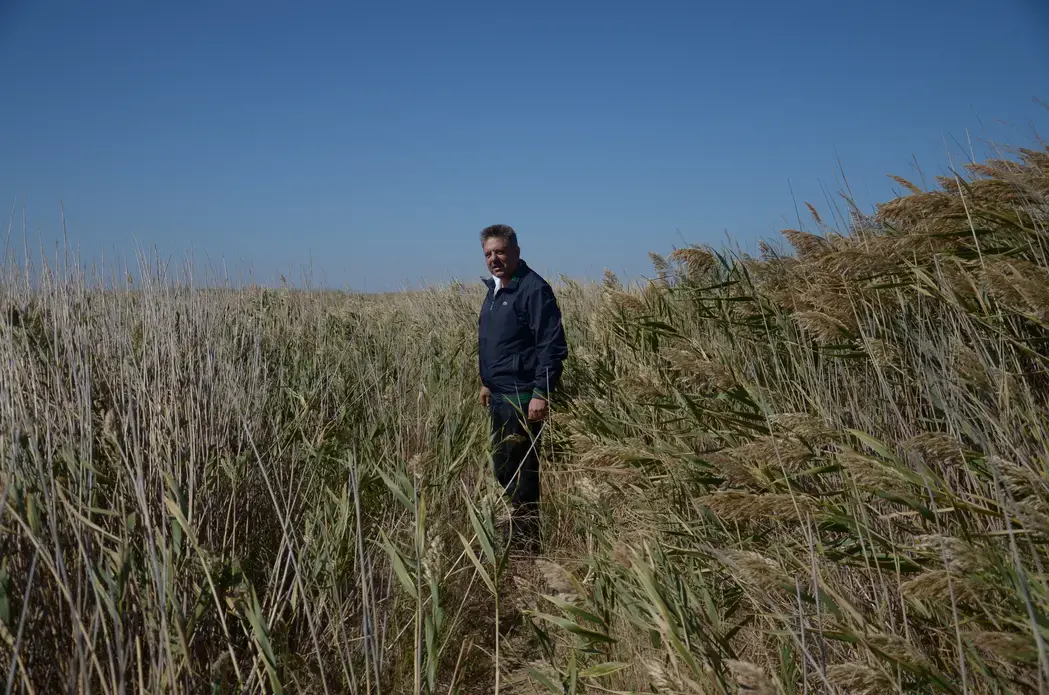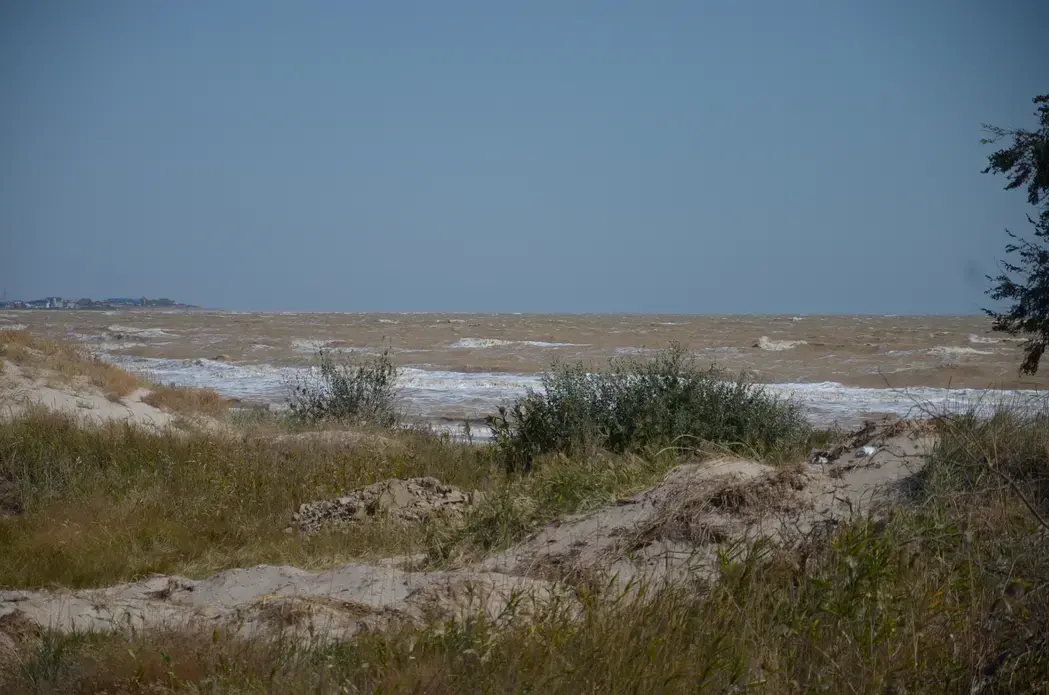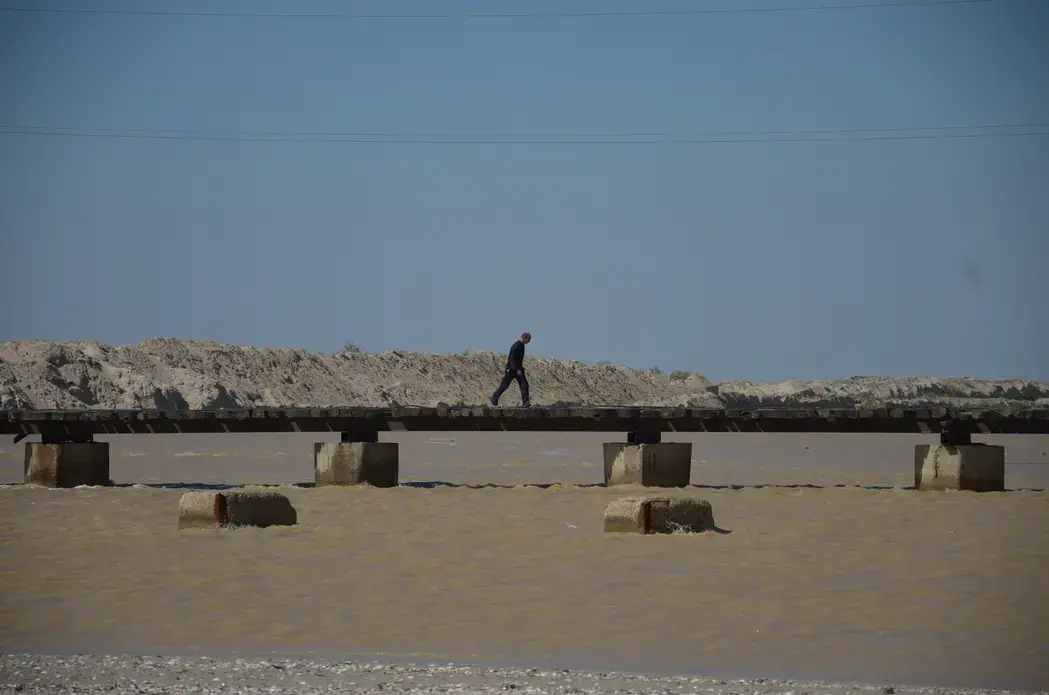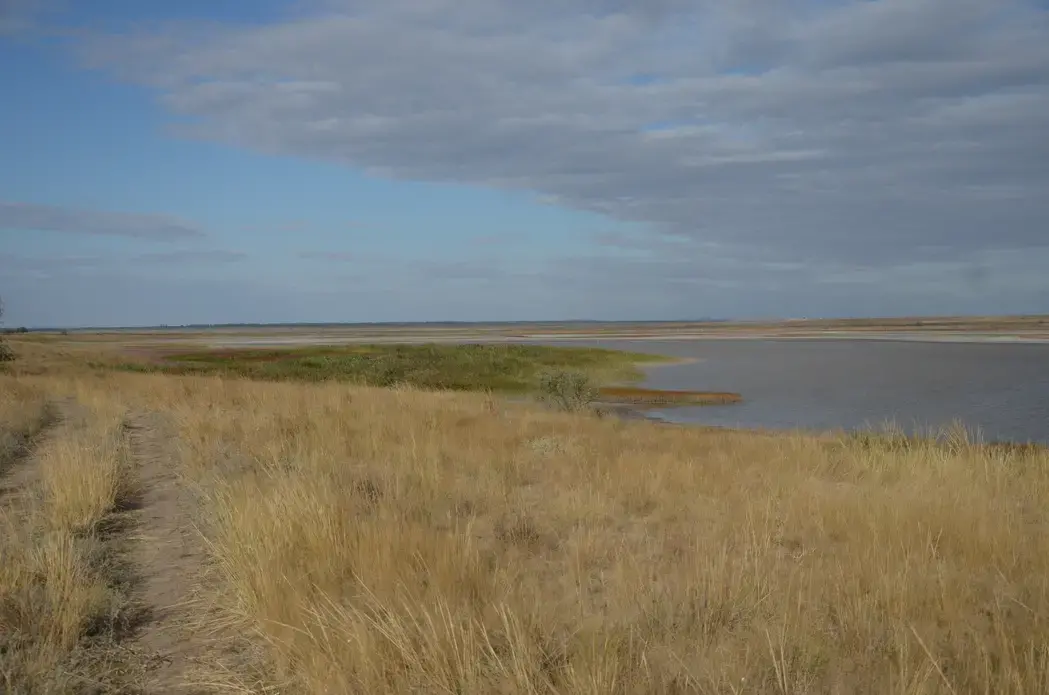It is a windy day on the northwestern shore of the Azov Sea. Beneath a sterile blue sky the water is brown and murky, the color of mud, short chubby rollers crashing one after another in a mess of surf.
The Ukrainian beach resort of Kirilivka--hotels, sanatoria, and children camps strung along a narrow sandspit--is already empty. Restaurants and cafes are shuttered.
The colorful waterslides at the water park, the biggest in Ukraine, are dry and cheerless. Only a few kite surfers, foreigners vacationing on the cheap, are taking advantage of the conditions.
It has not been a great season. The annexation of Crimea - right down the coast - and the ongoing war in the east of the country--a few hours up the coast--have kept many of the regular vacationers away.
The broad sandy beaches are no more
But there is another problem too: the sandy beaches here that once used to stretch flat and wide have diminished and in places have already disappeared, the inexorable waves slowly but surely devouring the shoreline.
Whatever happens on the Atlantic and the Pacific reverberates here. Climate change and rising ocean levels have arrived to this isolated part of the planet too.
The Sea of Azov, a northern extension of the Black Sea, is the most remote section of the world's oceans, the final vessel in nature's global aquatic system.
To come here from the Atlantic, a ship would have to pass through Gibraltar into the Mediterranean, then through the Dardanelles into the Sea of Marmara, through the Bosphorus into the Black Sea, and finally through the Kerch Strait.
Azov is also the world's shallowest sea, just 14 meters (45 feet) at its deepest point and generally averaging 8 meters (26 feet).
Because of the almost negligible gradient of its topography, it is especially susceptible to changes in the sea level, the effects oftentimes clearly visible. Local scientists claim that raising the water of the Azov by just a single centimeter could cause the inundation of up to three meters of shoreline.
Once, it was the Soviet Union's fish-basket
The Azov is unique in another way too. Similarly to the wider basin of the Black Sea, the large inflow of fresh water coming from major rivers like the Don and Kuban keeps the salinity low, while high content of organic nutrients has helped the abundant development of plankton, which in turn has nurtured large fish populations.
In the first half of the twentieth century the Azov was one of the most productive seas in the world and certainly the most productive one in the Soviet Union, securing 18% of the country's total fish catch.
Sturgeon, bream, pikeperch, goby, herring were all plentiful here: between 1930 and 1990, over 10 million tons of fish were caught here with the annual catch per hectare often exceeding 10 times that of other fishing areas.
Today, however, the Azov is a pale shadow of itself, most of the fish populations severely reduced or already extinct.
Overfishing (much of it involving illegal trawling), lack of adequate water treatment facilities in population centers, heavy pesticide use, industrial pollution (Azovstal in the coastal city of Mariupol, one of the biggest steel rolling factories in Ukraine, is a major polluter), and the construction of dams on inflowing rivers have all come together in the past fifty years to blot out this shallow, fragile sea. There is no viable fishing industry anymore.
A war against the odds
"Nature disappears faster than we can react", says Valery Sankov, the deputy director of the Priazovskii National Park, adjoining the resort of Kirilivka. "Unfortunately, we can't speak about saving nature anymore--there's nothing to save--but only about restoring it."
In his early fifties, with salt-and-pepper moustache and spikey hair, dressed in plain black jeans and blue jacket, Sankov used to be the head of the ecological inspectorate at the nearby city of Melitopol for ten years, but was sickened with the corruption and bureaucratic pressure.
He had always dreamed of working in nature protection and when the Priazovskii National Park was founded four years ago (after more than 15 years of lobbying), he jumped at the opportunity to be part of it.
An ornithologist, jurist, poet, and biker (in the evenings he puts on a leather jacket and hops on his chopper), he exudes energy and good cheer, but when it comes to the environmental situation in and around the Azov, he turns gloomy.
"We don't have a single living river left in the steppe area and the sea is almost dead. At the same time sea levels are rising, eating up the land", he says. "It's stunning how quickly we destroy habitats. Man is a horrific scalpel for nature."
Destruction heaped on destruction
The war in Ukraine has heaped destruction upon destruction. A number of nature reserves in the east of the country, in Lugansk and Donetsk regions, have been overrun by separatist military groups and the scientific staff had to evacuate.
Although close to the hostilities, the Priazovskii National Park is still safe and running but, like the whole national park system in Ukraine, it has seen its already limited funding dwindle as the Ukrainian government funneled all financial resources toward the war effort.
Environmentalism has been put on the backburner. There is hardly enough money for salaries and the park administration does not even have an office now. But Sankov and his colleagues are not giving up.
Dressed in military fatigues, the park's rangers are conducting their own kind of warfare, constantly on the lookout for poachers. With its 260 types of birds at different seasons (out of Ukraine's total 350 bird species), the Priazovskii National Park is a magnet for hunters.
Restoring the natural hydrology
Most importantly, though, the park staff has recently managed to restore the channel that used to connect the Azov to a large river estuary called Molochnoy Liman, ensuring normal exchange between the two bodies of water.
The Molochnoy Liman--part of the Ramsar Convention, the international treaty for the conservation of wetlands--was for a time one of the Azov's most biodiverse areas, teeming with fish.
But when the connection to the sea got silted up in the mid-1990s the salinity spiked, killing much of the regional ecosystem. Now Sankov hopes that maybe some of the aquatic life would return.
"Work in the park goes on because of people's own good will and faith", he says as he walks on a section of the Azov shore, the crashing waves nearly drowning his voice. "If we don't do this, then who will?"
Whatever his efforts, rising sea levels would be not as easy to combat as poachers.
"Our goal is to preserve our park until the end of the war. After the war ends, we'll just keep on fighting."


